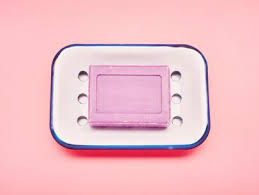Soap is a daily necessity for people, produced by the reaction of oil and alkali, and its main component is sodium octadecanoate or potassium octadecanoate. The equipment for producing soap can be automated, mechanized, or easily carried out. Its main equipment includes reaction pots, cooling tanks, and tools or machines for stirring, cutting soap, and pressing molds. A reaction pot is a container for the reaction between oil and alkali. It can be a regular iron pot, enamel pot, or even a beaker or flask, or a double-layer iron pot heated over water.
The process of making soap is simple but requires strict requirements. The methods include cold making, hot making, semi hot boiling, neutralization, lime decomposition, and continuous saponification. Seven production methods, including rapid saponification of catalysts. The cooling method involves first dissolving sodium hydroxide and water glass in water, then heating and melting butter, coconut oil, and tar in a pot, cooling to 40 ℃, and then injecting sodium hydroxide and water glass solutions. Stir as you add, to make the alkali and oil saponify. When the soap is stirred until it becomes a uniform gel, stop stirring to make the alkali and oil saponify. When the soap is stirred until it becomes a uniform gel, stop stirring, (It is not advisable to stir for too long, otherwise the alkali and oil will return to a separate state.) Then cover it and let it stand for a day. Once it is dissolved, it will become a solid. This method is simple and economical, but the disadvantage is that the product does not last long and may develop white frost and a foul odor over time. The ward uses heating method, which saponifies quickly, has good product quality, and low cost.
The entire production process of the heating method can be roughly divided into several aspects
1) For material preparation, quality and cost problems such as product hardness, color, foam, solubility, and detergency should be considered, and several kinds of fat free materials should be selected and mixed for use;
2) Pour the mixed oil into a saponification pot or pump it into a saponification reaction tank, boil it with steam, slowly add the alkaline solution until the saponification is complete. The soap liquid becomes a paste like soap gum. Then, add saturated salt water first, followed by a small amount of clean water and sufficient amount of alkaline water. Boil both first and then to achieve the purpose of salt and alkali precipitation, and completely separate the soap gum and glycerol impurities;
3) Stop heating, let it cool, and the soap will float up. Take the upper layer as the soap base; The lower layer can be left for the next batch to continue purification;
4) Transfer the prepared soap base into a mixing pot, add the prepared alkali solution, titanium dioxide, fragrance powder, and other fillers in a certain amount, stir and mix at a certain temperature, and then pour it into a cooling tank. Alternatively, a new vacuum drying process can be used to solidify the soap base into large pieces of soap;
5) Cut large pieces of soap into strips, dry them and press them into molds. After quality inspection, they can be packed and shipped out of the factory.
During the saponification reaction process mentioned above, attention should be paid to checking whether the reaction is complete. The method is to take a drop of soap solution and add it to hot and clean water after adding alkaline solution. If there are no oil splashes floating, it indicates complete saponification. Otherwise, alkaline solution should be added appropriately. Insufficient use of alkaline solution will result in free oils and fats in soap, leading to poor removal ability. More soap will precipitate white powder, which is irritating to the skin. In addition, if appropriate rosin is added to the soap, it can increase foam and enhance the ability to remove the law. If alkali liquor is added in the process of saponification reaction, divide the alkali liquor into three parts. Add one part slowly, stir and heat continuously, and use a wooden stick to pick up some reaction liquor and drop it into the pot. If foam can be formed, it means that the reaction is completed. Add another part of alkali liquor, continue to stir and heat until the third part of alkali liquor is added, and complete the reaction, which is continuous saponification method.
Supplier
TRUNNANO is a supplier of sodium silicate with over 12 years experience in nano-building energy conservation and nanotechnology development. It accepts payment via Credit Card, T/T, West Union and Paypal. Trunnano will ship the goods to customers overseas through FedEx, DHL, by air, or by sea. If you are looking for high-quality sodium silicate, please feel free to contact us and send an inquiry.

